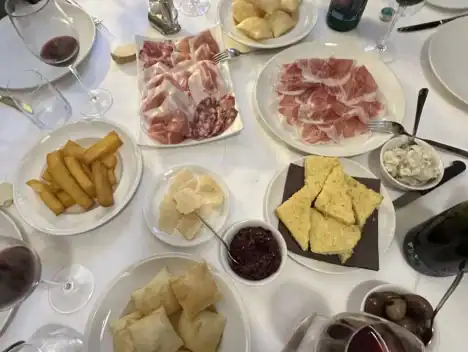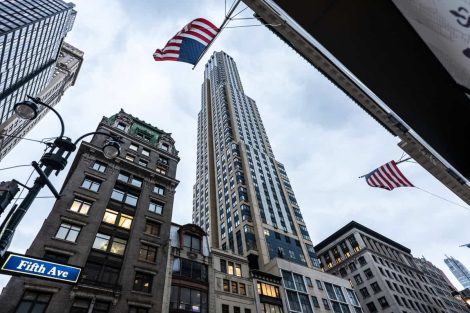During the Roman Empire, it was the seat of a castrum of the imperial horse guards (Equites Singulares Augusti): hence the name, Esquilino, which was also one of the seven hills of ancient Rome, the highest. The boundary of the historical city—the limit was the Servian Walls, visible in Termini Station— with burial and dump areas, it was the site of gardens and residential villas until the late Empire, with the Horti Maecenatis, owned by the wealthy advisor to Augustus. Still, a monastic territory in the Middle Ages, a neighborhood of villas in the seventeenth century, after Rome's annexation to the Kingdom of Italy, Esquilino changes its face completely: the city expands, and the district takes on the regal appearance it has today, with the Umbertine palaces designed for the new bourgeoisie (and the arcades that pay homage to the House of Savoy).
Piazza Vittorio
Thanks to the expansion of Termini Station, in the 1980s, the multiethnic image of Piazza Vittorio took shape. The district changes once again, with the advance of Chinese traders' shops, the opening of halal butchers, Indian spice shops, and Bengali minimarkets. Amidst contrasts, neglect, and then, again, growth and gentrification (today, celebrities from the cinema and the Roman culture live here), the neighborhood is a mosaic that paradoxically still preserves many nodal places of its twentieth-century history: the former Caserma Sani (Sani Barracks house) the Esquilino Market on one side and La Sapienza University on the other; here are still active some of the most important theaters in the city: Teatro dell'Opera, Ambra Jovinelli, Brancaccio. Here, many of Rome's historical signs are alive, restaurants, and shops where the history of Italy has been literally made.
Historic Venues
The shops, cafes, restaurants, after a century, are no longer just places of commerce. Those walls become the condensed version of entire lives and of an era, especially of a complicated century like the twentieth. Claudio Bordi, of Coloreria Bordi in Via dello Statuto, a few years ago told 'La Repubblica' that his grandfather hid 17 people during a Nazi roundup in 1943 in a trapdoor in the back shop. The same testimony was collected at Biscottificio Cipriani, where they remember how the various tunnels starting from the cellars of the houses and reaching up to the Colosseum concealed – the saving power of a city stratified over millennia – many Romans threatened by the proximity of Via Tasso, where the SS Command was located. From Fassi, from '44 to '46, the American Red Cross requisitioned the Palazzo del Freddo in Via Principe Eugenio to feed the Allied troops. And anecdotes like these, visiting the signs we tell you about in this itinerary, are discovered in abundance.
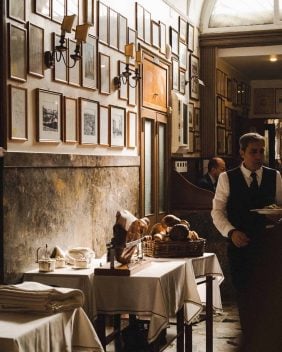
La Matriciana since 1870
A legendary place, born as a trattoria in the year of Porta Pia and the taking of Rome. In the following decade, with the construction of Teatro Costanzi (the future Teatro dell'Opera), it became the meeting place for the greatest names in opera, dance, and twentieth-century art, from Callas to Fracci. The furnishings date back to the thirties, the charm amplified by the fact that by sitting at these tables, surrounded by history, one can still enjoy excellent Roman cuisine.
La Matriciana dal 1870 - via del Viminale, 44 - Roma - www.lamatriciana.it
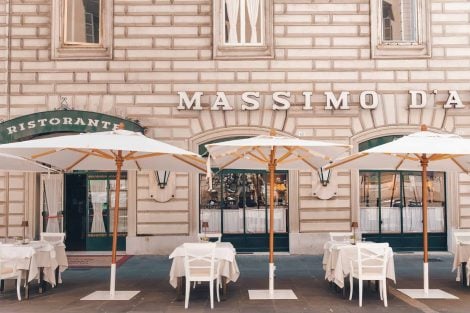
Hotel and Restaurant Massimo D'Azeglio
Thanks to its proximity to Termini Station, inaugurated a few years earlier - it will be redesigned in 1950 - and to the Teatro Costanzi/dell'Opera, since 1878 this sign has been loved by royals, artists, musicians, and writers from all over the world. Mascagni, Giolitti, Pasolini, Coppi, the illustrious customers who have frequented these environments are countless. For five generations always in the hands of the Bettoja family, of Piedmontese origin, who have managed to preserve furnishings, works of art, and an atmosphere that cannot be found elsewhere.
Hotel e Ristorante Massimo D'Azeglio - via Cavour, 14 - Roma - ristorantemassimodazeglio.it
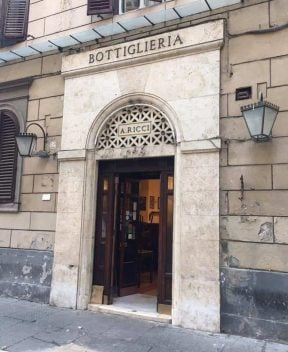
Antica Pizzeria Ricci
Also known as Est! Est! Est!, this sign was opened in 1888 as a wine shop by Cavalier Ambrogio Ricci; later, in the early twentieth century, with the arrival of electricity, it became a pizzeria. It retains the original wooden furnishings from the 1920s and a slightly faded atmosphere; even the pizza is from another era, like the menu, including crostini alla cardinale (bread, mozzarella, prosciutto, and champignon mushrooms) and flambéed amatriciana finished in a wheel of Pecorino Romano, which still has a strong appeal to the international public.
Antica Pizzeria Ricci - via Genova, 32 - Roma - facebook.com/AnticaPizzeriaFratelliRicci
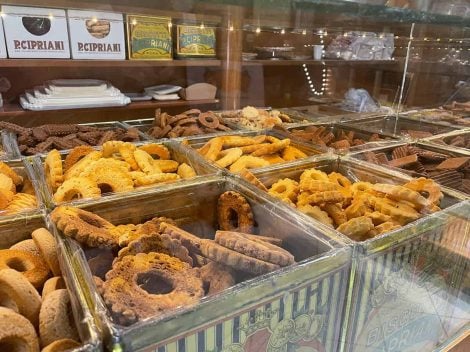
Premiata Pasticceria Cipriani since 1906
The tin boxes, the floral decorations, the ancient shapes of the biscuits, from oswego to vittorio: the Cipriani family is in its fourth generation of pastry chefs, with a craftsmanship production that also extends to cakes, tarts, and rusks. Today it's Luca, great-grandson of the founder Pietro, who holds high the banner of the sign and, with it, the artisanal memory of the neighborhood.
Premiata Pasticceria Cipriani dal 1906 - via C. Botta, 21 – Roma - pasticceriacipriani.com
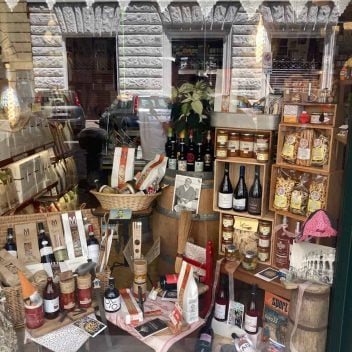
Alimentari Grassi
It's been over 100 years for a while now, without fanfare, the neighborhood shop of Annalisa and Flavio Grassi, current owners of the grocery store opened four generations ago by their great-grandfather. Two shop windows, no sign - "Here everyone knows us as Flavio and Annalisa" they say - and an evolved assortment, not at all stuck in time, which includes well-selected wines, artisanal pasta, butter from Val Pusteria, and fish preserves from Cetara. A lot of courtesy.
Alimentari Grassi - via A. Poliziano, 19 - Roma - 06 70453924
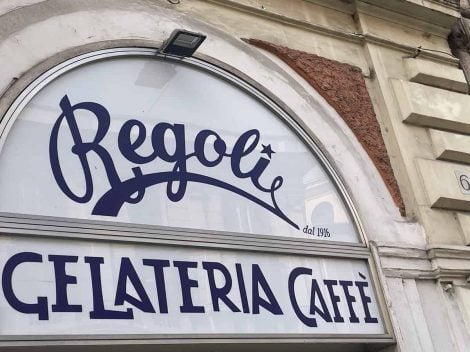
Regoli
The Regoli family is one of the symbols of Roman pastry since 1916. The Esquilino shop is a point of attraction for gourmets arriving in the Capital from all over the world. The scent of pastries announces the proposals on the counter, starting from the famous maritozzi, always available here with whipped cream or in the more traditional quaresimali version. And then fans, profiteroles, bundles, tarts, a traditional repertoire kept alive with tenacity by Carlo Regoli and his family members.
Regoli - via dello Statuto, 60 - Roma - www.pasticceriaregoli.com
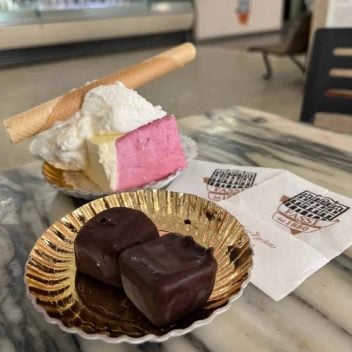
Fassi since 1880
The oldest ice cream parlor in the city – and one of the oldest in Italy - was founded in 1880 by Giacomo Fassi but moved to its current location, the famous Palazzo del Freddo, in 1928. In a century, everything has happened here: pioneers in technology from the beginning (Telegelato, thanks to dry ice, made ice cream shippable worldwide), the sign was acquired by a Korean company in 2014. Today it firmly maintains its charm with period furnishings, historic machines, and some original productions, such as semifreddos and sampietrini, under the guidance of Andrea Fassi, who has contributed to the internationalization and expansion of the brand.
Fassi dal 1880 - via Principe Eugenio, 65-67 – Roma - www.gelateriafassi.com
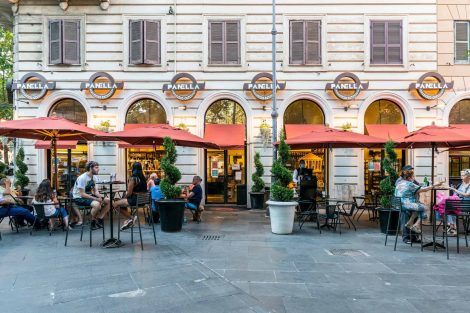
Panella
In via Merulana of Gadda's Pasticciaccio, of the Brancaccio Theater, and of the Brancaccio Palace with its splendid Field Space, since 1929, the Panella sign has stood out. Under the guidance of Maria Grazia Panella, assisted by Tiziana Bufacchi, the original bakery has become a large company, with multi-location projects, an ongoing collaboration with Chef Express, a place that never stops, between breakfast, aperitifs, lunch, and dinner. Those nostalgic for times past come in for a zabaione or for pizza with mortadella.
Panella - l'arte del pane - via Merulana, 54 - Roma - www.panella-roma.com
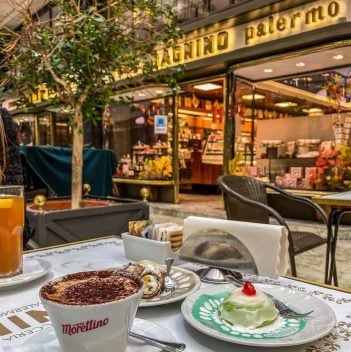
Dagnino
In 1955, the first Sicilian pastry shop in Rome opened: the paintings by Alfonso Amorelli and Herta Schaeffer on mirrors and panels, the sculptures by Giovanni Maria Manganelli, everything retains its original charm, in a frame that is already original in itself, the Galleria in via Vittorio Emanuele Orlando. At the indoor and outdoor tables, you can enjoy cannoli, arancine, torroni, and frutta martorana. Something could be improved, but the atmosphere is truly priceless.
Dagnino - via Vittorio Emanuele Orlando, 75 - Roma - www.dagnino.com
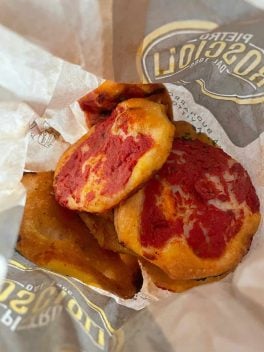
Forno Roscioli Esquilino
The surname is imposing, it recalls the history of one of the bread families in Rome, starting from the Marche in the 1950s with the progenitor Franco. Here in Esquilino, it's Pietro Roscioli who, once on his own, in 1986 opened his bakery, in a side street of Piazza Vittorio. Today at the helm is his son Andrea, who manages a very wide production of savory and sweet items. Strengths include the bread with figs, walnuts, and raisins – the flagship of the place – and the pizza alla pala, stretched very long in ovens two meters deep, a work of art. For genre fetishists, keep an eye on the red mini-pizzas, delicious.
Forno Roscioli Esquilino - via Buonarroti, 46/48 - Roma - facebook.com/FornoRoscioliEsquilino

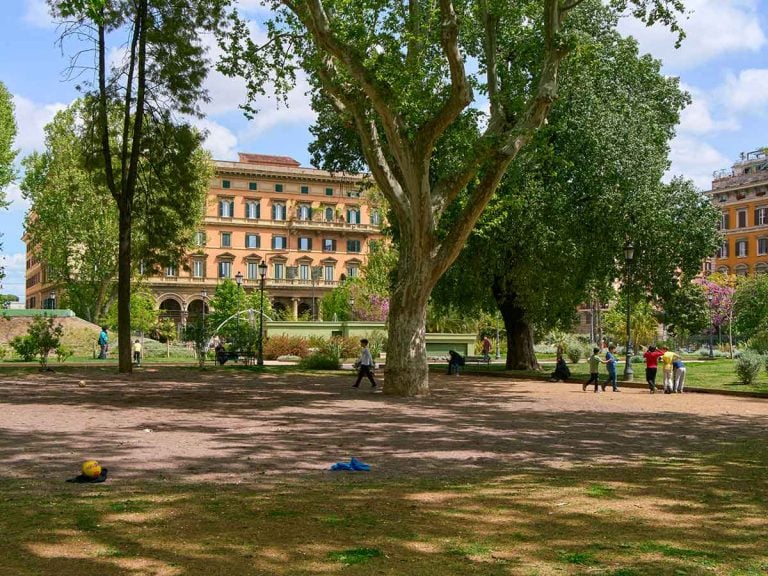
 US Tariffs. according to the Government, a 10% rate would not be impactful, but for most wineries the risk is high
US Tariffs. according to the Government, a 10% rate would not be impactful, but for most wineries the risk is high Grilled vegetables and chicken on the side: in Chianti, plant-based cuisine takes centre stage
Grilled vegetables and chicken on the side: in Chianti, plant-based cuisine takes centre stage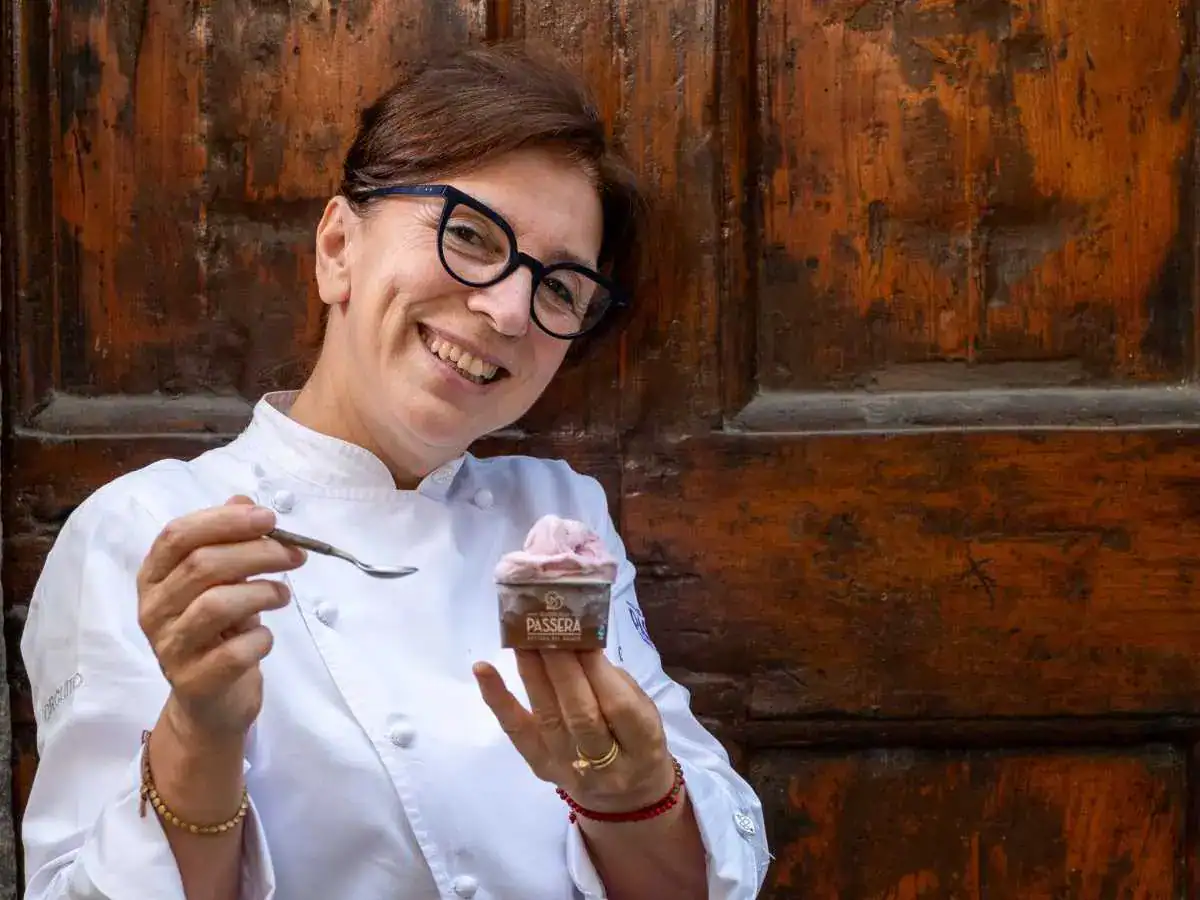 A top gelato maker from Florence launches flavours dedicated to women who made history
A top gelato maker from Florence launches flavours dedicated to women who made history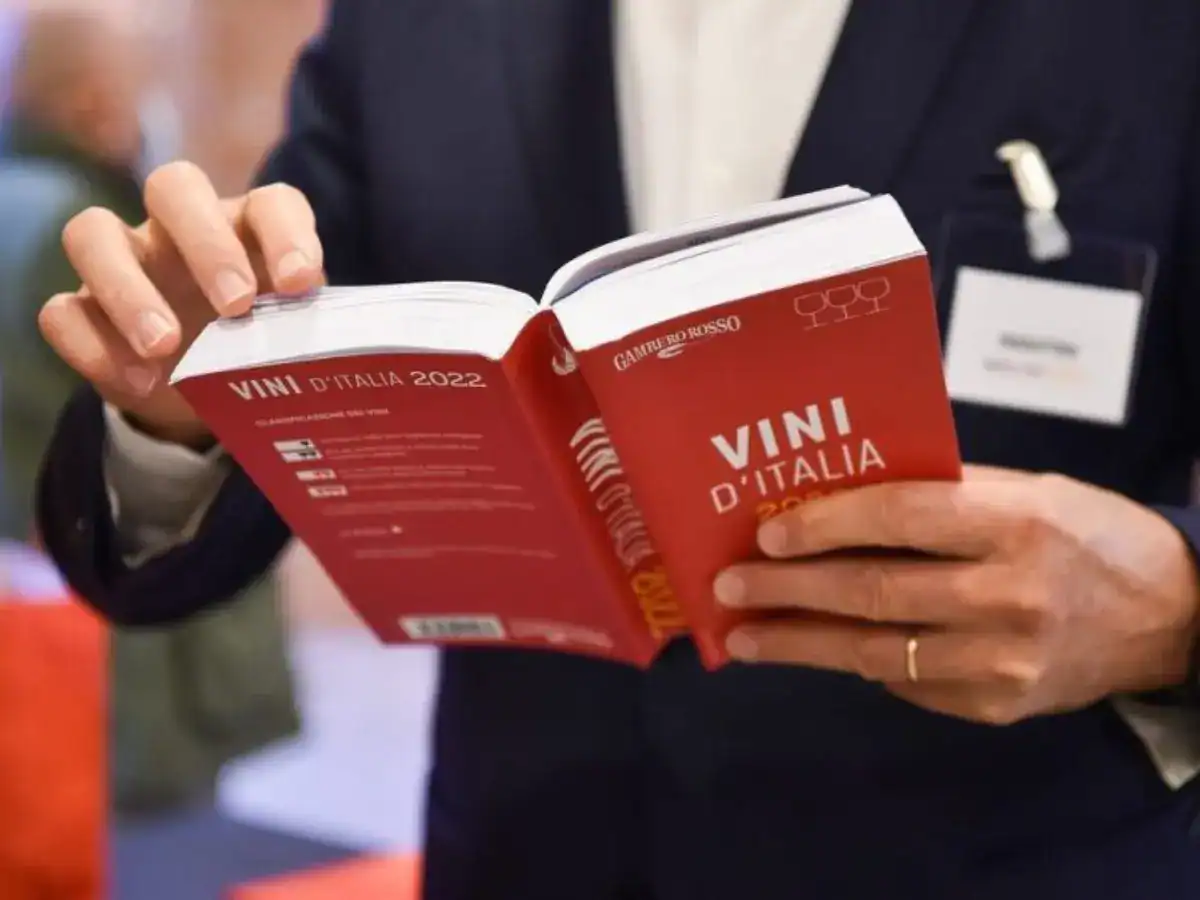 How the Gambero Rosso Vini d’Italia Guide works: the Tre Bicchieri method
How the Gambero Rosso Vini d’Italia Guide works: the Tre Bicchieri method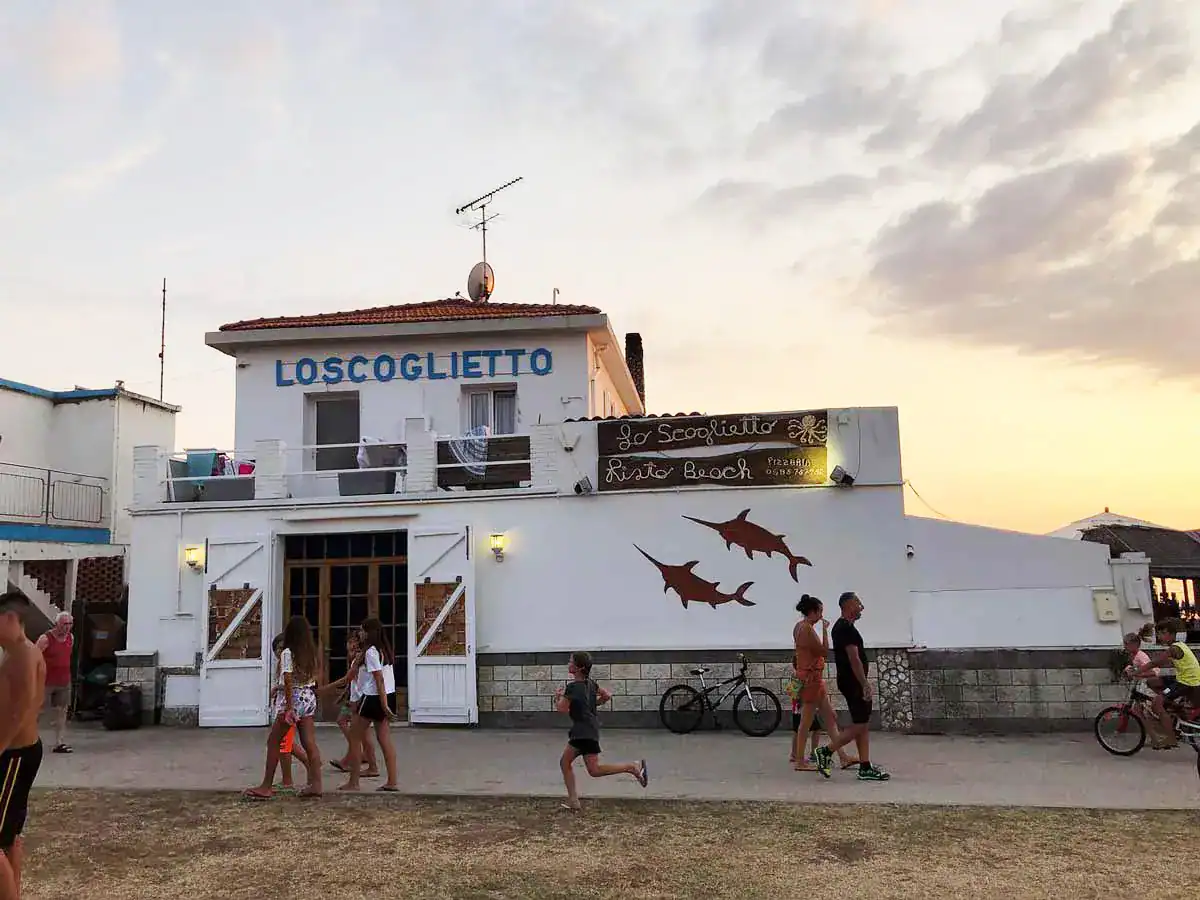 The secret life of the beach club with over a thousand (stunning) bottles on the menu
The secret life of the beach club with over a thousand (stunning) bottles on the menu



